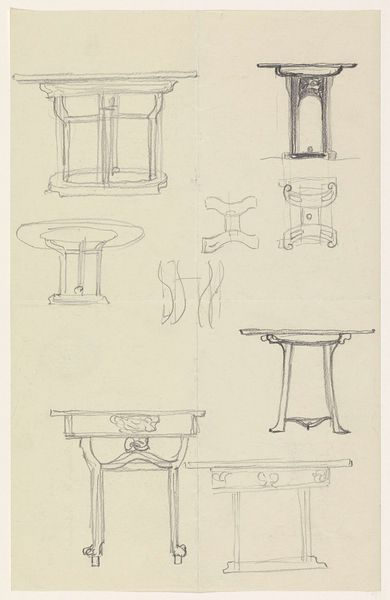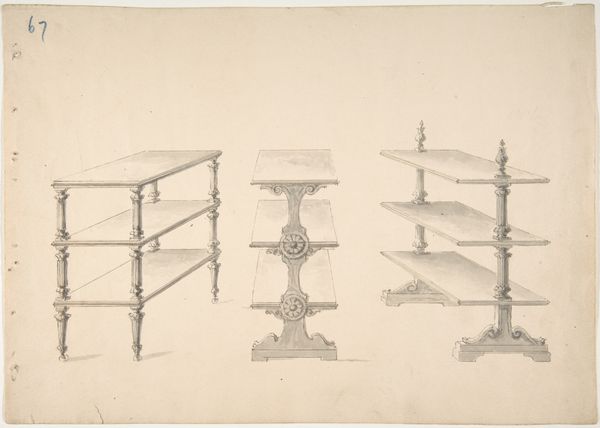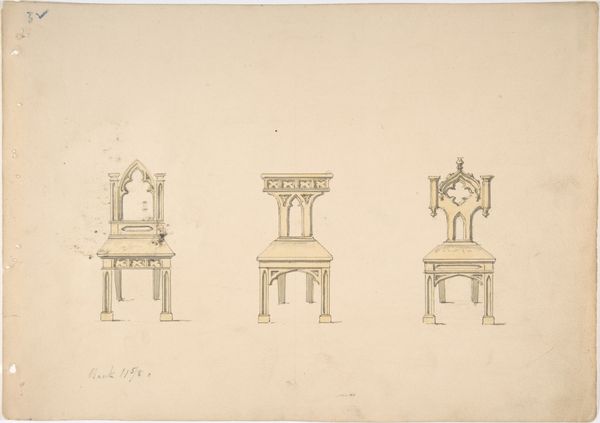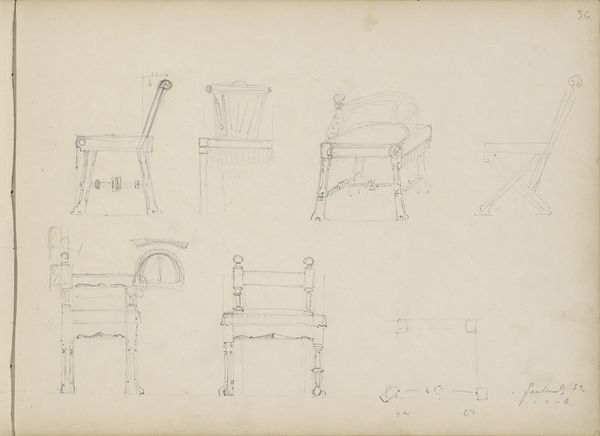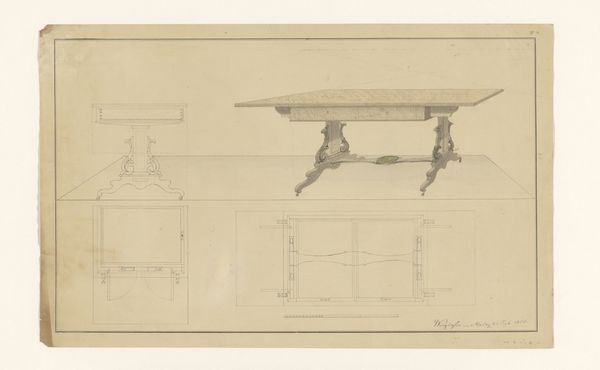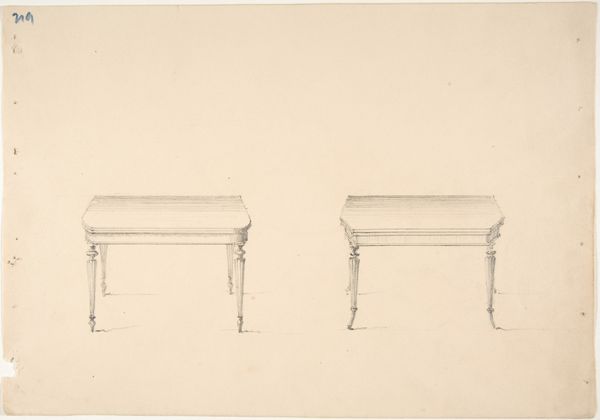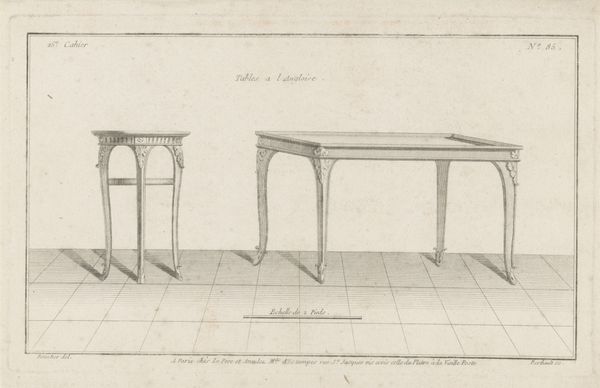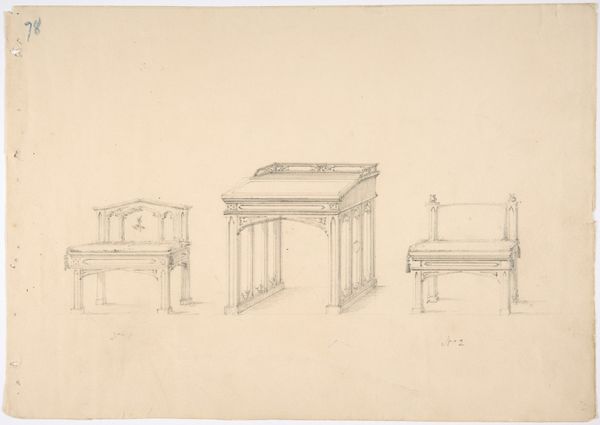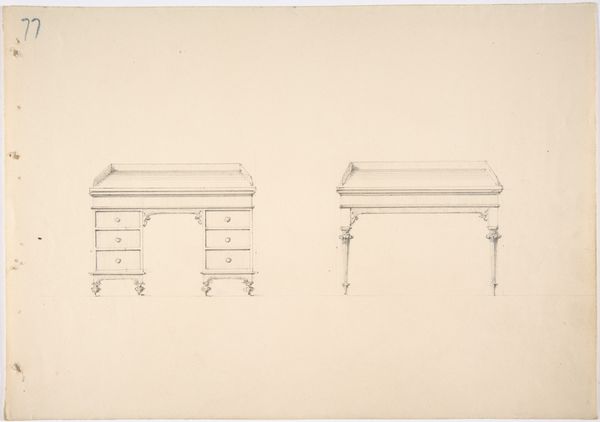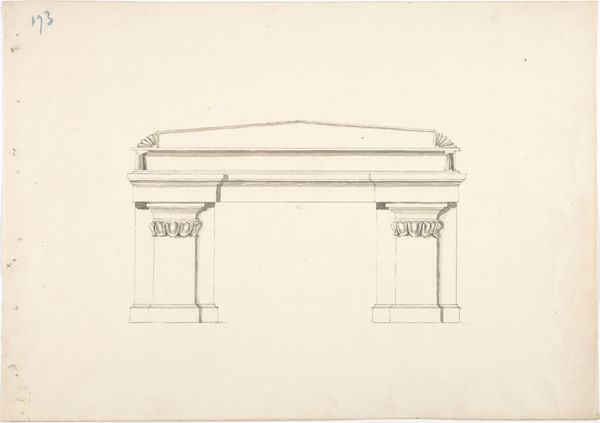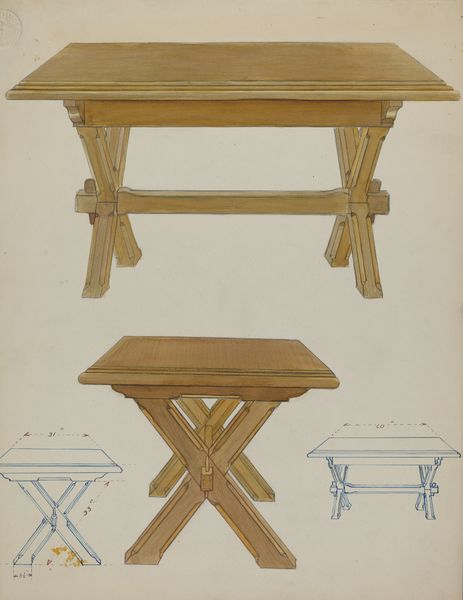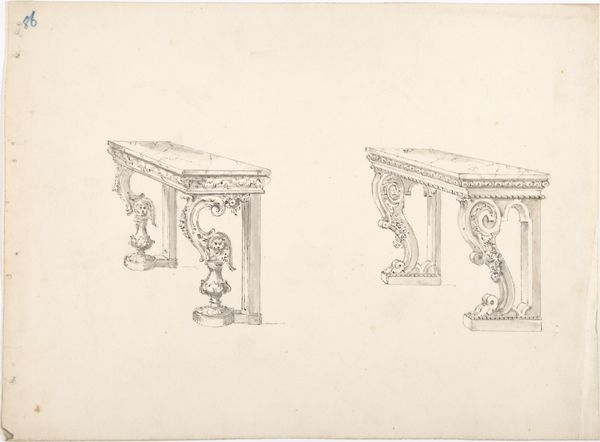
drawing, paper, pencil
#
architectural sketch
#
drawing
#
table
#
aged paper
#
toned paper
#
light pencil work
#
arts-&-crafts-movement
#
sketch book
#
etching
#
paper
#
personal sketchbook
#
geometric
#
pencil
#
sketchbook drawing
#
storyboard and sketchbook work
#
sketchbook art
Dimensions: height 275 mm, width 330 mm
Copyright: Rijks Museum: Open Domain
Editor: This is "Vijf ontwerpen voor tafels," or "Five Designs for Tables," by Carel Adolph Lion Cachet, dating from 1874 to 1945. It's a drawing, primarily in pencil, on paper. I’m struck by how these designs seem to blend functionality with a real artistic sensibility. What's your interpretation of this work? Curator: I see a potent intersection of art, craft, and social ideals, aligning with the Arts and Crafts movement. The designs embody a resistance to industrial mass production and a celebration of handcraftsmanship. Do you notice the emphasis on ornamentation and the use of what appears to be natural motifs? Editor: Yes, now that you mention it, there are little flourishes around the supports of each table, little curved details. I see that some have geometric shapes. Curator: Consider the historical context. This piece exists within a period of immense social change, rapid industrialization, and growing class disparity. Cachet, and others in the Arts and Crafts movement, sought to elevate the status of artisans and bring beauty to everyday life, pushing back against what they saw as the dehumanizing effects of industrial capitalism. How might the concept of the table itself – as a site of gathering, labor, or display – play into these themes? Editor: That's an interesting point. Thinking of the table as a symbol of communal gathering reframes it. Were they hoping to affect societal change, maybe subtly? Curator: Absolutely. The movement hoped to affect social change by changing how we related to objects, arguing that well-designed, handcrafted goods could improve people's lives, fostering a sense of community and shared purpose. These designs, therefore, are not just about furniture; they’re about reimagining the social fabric. Editor: I never would have considered the political and societal commentary of a table design! Thank you for the perspective! Curator: And thank you for bringing fresh eyes. These dialogues are essential for constantly re-evaluating the role of art in culture.
Comments
No comments
Be the first to comment and join the conversation on the ultimate creative platform.
